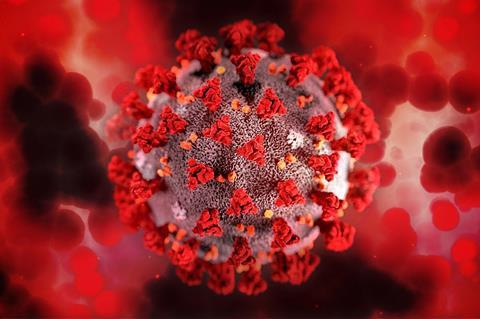This research by a team at Koç University in Turkey focuses on the development of DNA aptamer-based metasurfaces for the enhanced detection of SARS-CoV-2 and its variants.

The paper, “Rapid Nanoplasmonic-Enhanced Detection of SARS-CoV-2 and Variants on DNA Aptamer Metasurfaces,” was published in Advanced Devices & Instrumentation.
By integrating nanoplasmonic elements with aptamer-functionalized metasurfaces, the study achieved remarkable improvements in sensitivity and specificity. The synergy between the unique properties of metasurfaces and the high affinity of DNA aptamers allows for rapid and reliable detection of the target viruses.
Capturing viruses
Primary and secondary aptamers capture the viruses on the surface which is specifically designed and manufactured for nanoplasmonic enhancement. Primary aptamers are used to functionalize the gold nanopatterned metasurface via thiol bonds and secondary aptamers are used to create a fluorescent effect via the Cy5.5 dye modification.
The virus is trapped in between primary and secondary aptamers, forming a sandwich structure. Plasmonic enhancement and fluorescent signal paved the way for the detection of viruses through Raman and fluorescent signal. Machine learning is used to classify the SERS and fluorescent spectra and allowed the identification of different variants with near-perfect accuracy. The sensitivity and specificity in 69 clinical SARS-CoV-2 patients was determined as 95.2%.
The rapid nanoplasmonic-enhanced detection enabled by DNA aptamer metasurfaces holds promise for efficient screening of SARS-CoV-2 and its variants in clinical settings, airports, and other high-traffic areas. The sensitivity and speed of this approach open avenues for early detection, contributing to effective disease control and prevention strategies.







No comments yet